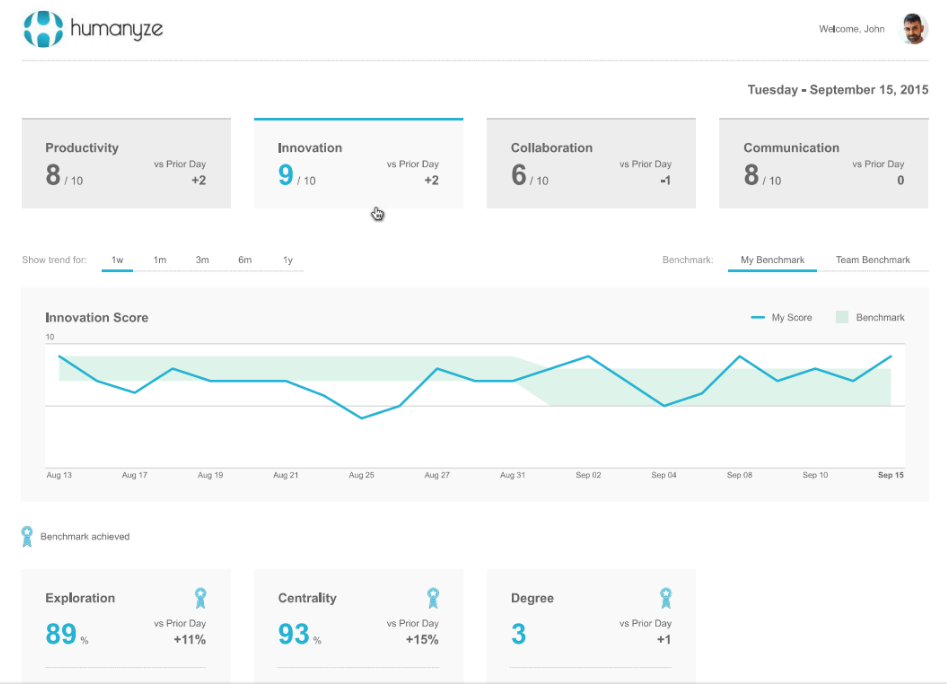How can "People Analytics" transform workspace design?

Over the past decade we have undertaken manual time utilisation observation studies to track how space is used and how people spend their time. With new technologies, metadata can now be captured without the need for manual observation and analysis.
Week 16:
Humanyze, a social sensing and analytics platform developed at MIT, is part of an emerging field called People Analytics. By collecting data and analysing employee activities and behaviour, companies can gain new insights to help them operate more efficiently. The use of metadata also results in more reliable data than methods of self-reported information, such as focus groups or employee surveys.
The availability of wearable technology today has helped to facilitate companies like Humanyze, that enable businesses to examine employee behaviour with more precision than ever before. Companies already collect a great deal of data from their employees through the means of swipe cards for example, to record their movement throughout an office. The emerging field of people analytics therefore seems to be the next natural step in the evolution of our workplaces, and is already utilised by large companies such as Microsoft and Deloitte, the latter of which implemented Humanyze in a project in 2015.
How Humanyze works
Humanyze is an opt-in smart badge that measures human behaviour. The device which resembles a smartphone is worn on a lanyard and is equipped with a microphone, accelerometer and Bluetooth connection. The wearers movements, face-to-face encounters, speech patterns, vocal intonations, and posture are measured. Although conversations are not being recorded, the metadata is, so to provide information such as who's talking to whom, for how long, and where.
This collected metadata essentially provides a heat map of office activity, the information of which is linked to a business metric dashboard, so an organisation can see how behaviours are affecting their bottom line performance.

Image Source: https://www.humanyze.com/products.html
What impact does this have on design?
Using people analytics allows us to see information that is otherwise invisible. It is able to reduce risk through showing whether teams are under-communicating, visualise how they spend their time, and understand employee communication preferences. This information is translated into better designed offices which have a refined programme; we are able to measure exactly which spaces are successful and why, what areas of design need to be improved and which spaces are redundant in practice.
At the moment the use of people analytics is particularly effective for larger companies which have more than one office location. Through measuring and comparing the data from two periods - before and after a new office design layout - unsuccessful factors can be used to inform other redesigns.
On the other hand, smaller organisations or those with one location aren't able to benefit from people analytics to the same degree. At this scale a sample manual observation study can suffice. Perhaps if relevant information from varies companies were to be made available to provide case studies, others would also be able to learn from and implement people analytics to inform more successful office designs.
Sources:
http://www.humanyze.com/products.html


